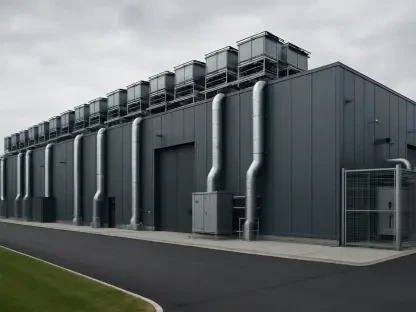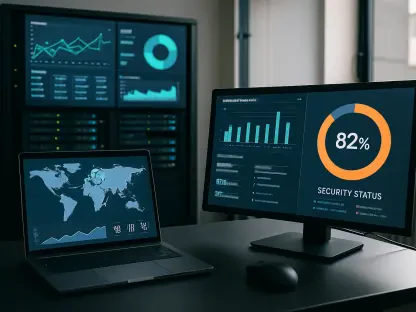In the rapidly evolving landscape of digital technology, the Nordic region emerges as a vanguard of sustainable cloud transformation, deftly intertwining innovation with environmental responsibility. This strategic integration comes as the region leverages its robust commitment to renewable energy, combined with stringent regulatory frameworks and increasing investor demands for sustainable practices. As we find ourselves in 2025, Nordic enterprises redefine not only the contours of digital advancement but also seamlessly embed sustainability into their IT infrastructures. The push towards hybrid and multi-cloud solutions stands central to this transformation, offering a blueprint for balancing environmental stewardship with technological progress. This article explores the myriad factors that make the Nordic region’s approach both unique and influential in setting a global benchmark for sustainable digital practices.
Key Themes and Driving Forces
The landscape of cloud computing in the Nordic region is significantly influenced by regulatory pressures, particularly the European Union’s Corporate Sustainability Reporting Directive (CSRD). This directive mandates comprehensive environmental, social, and governance (ESG) disclosures from this year onwards, thereby accelerating the shift towards cloud solutions that align with eco-friendly goals. As businesses race to comply with these regulations, the drive for transparency and accountability pushes enterprises towards greener technology options. Alongside regulatory imperatives, investor expectations play a parallel role, urging companies to adopt sustainable computing practices. By aligning technological strategies with environmental objectives, Nordic enterprises not only meet regulatory requirements but also enhance corporate reputation, attracting environmentally conscious investors.
Another salient driver of the Nordic cloud transformation is the region’s prolific access to renewable energy sources such as hydro, wind, and geothermal power. Here, over 50% of the electricity generated stems from renewable sources, offering a considerable advantage in terms of cost and sustainability. This reliance on clean energy translates directly to reduced operational costs—up to 50% lower than the European average—illustrating a compelling case for businesses seeking both economic and environmental benefits. The abundance of renewable resources allows data centers to operate on clean energy, which aligns perfectly with the region’s goal to decrease carbon emissions and foster a sustainable digital ecosystem. This synergy between technology and sustainability cements the Nordic region’s position as a leader in eco-friendly digital transformation, setting a precedent for others to follow.
Technologies and Strategic Innovations
The Nordic strategy is marked by an astute adoption of hybrid cloud solutions, which offer the dual advantage of sidestepping vendor lock-in and optimizing cost efficiencies. This flexibility enables enterprises to balance on-premises infrastructure with the scalability and economic benefits of public cloud platforms. Hybrid systems particularly resonate in the Nordic context, where technological adaptability parallels a strong commitment to sustainable resource use. By integrating energy-efficient cooling technologies and recycling waste heat for district heating, Nordic companies exemplify the innovative strategies necessary for meeting both economic demands and sustainability mandates. The commitment to this dual advantage is echoed in technological investments that enhance operational efficiency while also reducing carbon footprints.
In terms of market leaders, the Nordic region hosts a dynamic mix of global and regional players. Companies like Tietoevry have made significant strides in leading hybrid cloud orchestration and establishing benchmarks in sustainability metrics. By collaborating with local governments, these leaders maximize efficiency, evidenced in initiatives like repurposing data center heat for agricultural and industrial applications. The region’s narrative extends to Nordic Semiconductor, an exemplar of sustainable electronic solutions, recognized among the world’s most eco-friendly companies. This focus on developing energy-efficient hardware, fundamental for edge computing and IoT deployment, aligns powerfully with the industry’s sustainability goals. Such innovations, tailored for environmental performance, highlight the deep-rooted alignment between Nordic strategies and global expectations on sustainable digital practices.
Investment Trends and Emerging Opportunities
Investment trends within the Nordic cloud market show a dual trajectory, focusing on infrastructure firms boasting strong green credentials and those promoting hybrid cloud scalability. Green data center operators, such as CEMAsys, are instrumental in this ecosystem, providing cloud-based ESG data management tools that ensure compliance with the CSRD. Their presence is marked by ISO 27001 certification, bolstering their reputation as leaders in secure and sustainable technology solutions. Meanwhile, operators like Orange Business continue expanding their infrastructure in the Nordic region, powered substantially by renewable energy. This dual approach not only positions operators strategically within the market but also attracts investors keen on financing ESG-compliant initiatives.
Companies specializing in automation and edge computing are increasingly pivotal, addressing the demand for efficient management of complex workloads while mitigating energy usage. Firms such as Persistent Systems and Kyndryl have responded to this demand by pioneering AI-driven cooling solutions that demonstrate substantial year-on-year growth. This innovation is indicative of the broader market dynamics in the Nordic region, highlighting how strategic investments in technology can yield both economic and environmental dividends. As these market participants consolidate their positions, they unlock new investment opportunities that promise both financial returns and societal impacts. The landscape thus continues to evolve, marrying technological progress with an unwavering commitment to sustainability.
Overcoming Challenges and Envisioning the Future
Despite the promising landscape, several challenges remain, notably the evolving nature of standardized carbon accounting metrics, complicating provider comparisons. As the market seeks uniformity, this variability poses a hurdle for enterprises navigating the green data center space. Furthermore, upstream costs associated with advanced green infrastructure, despite long-term savings, can be prohibitive for smaller enterprises. To counteract these barriers, Nordic governments have proactively introduced incentives, including subsidies for renewable projects and tax reliefs for ESG-focused investments. These governmental measures aim to level the playing field, ensuring uniform opportunities across businesses of all sizes.
Looking ahead, the integration of AI and edge computing will be pivotal in advancing the digital infrastructure’s sustainability profile. The burgeoning presence of IoT devices spurs demand for low-latency and energy-efficient edge solutions. Through innovative applications, such as AI-driven resource allocation and carbon-aware scheduling, Nordic providers exemplify the potential of cutting-edge technology in fulfilling eco-friendly objectives. These advancements signal an exciting frontier in digital transformation that promises to consolidate the Nordic region’s leadership in sustainable practices.
Bridging Technology and Environmentalism
The Nordic region’s cloud computing landscape is heavily influenced by the European Union’s Corporate Sustainability Reporting Directive (CSRD), which requires rigorous environmental, social, and governance (ESG) disclosures starting this year. This directive is speeding up the adoption of cloud technologies that are environmentally friendly, as companies strive to comply. The push for transparency and accountability in ESG directives is driving businesses toward greener tech solutions. Investor expectations also play a vital role, encouraging companies to adopt sustainable computing practices. By aligning their tech strategies with green objectives, Nordic businesses not only meet regulations but also boost their reputations, appealing to eco-conscious investors.
Moreover, the Nordic region benefits from abundant renewable energy resources, such as hydro, wind, and geothermal power. Over half of the electricity generated here is renewable, resulting in significant cost efficiencies—about 50% less than the European average. This clean energy reliance helps to cut operational costs and reduce carbon emissions, solidifying the Nordics as leaders in eco-friendly digital transformation and setting a benchmark for others to emulate.









